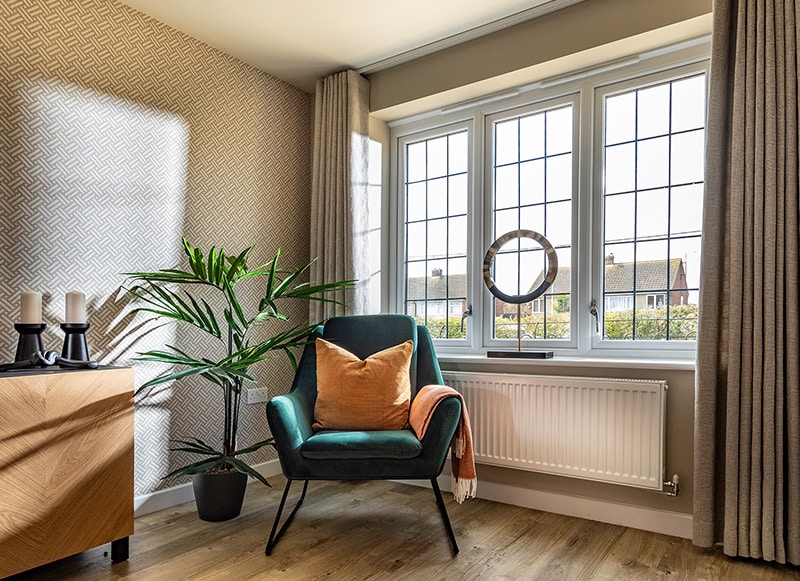Research reveals that while the home improvement sector contracted last year, installed value has held its own. John Leary, Sales and Marketing Director, Emplas, discusses.
Things, right now, are difficult to call with any confidence. Brexit and the decision to leave the EU is a momentous decision in anyone’s book, which makes second guessing just how homeowners are going to react to it difficult.
But for better or worse, there are underlying trends which are shaping our own industry, irrespective of the UK’s wider economic fortunes. This is something, which is highlighted in recent market research.
As well as contemplating what it suggests, is likely to be a negative impact of Brexit on the UK window industry in 2017, The Window, Door and Conservatory Markets in Housing in Great Britain, identifies a series of drivers, which it suggests, are shaping our industry.
Published by Palmer Market Research, the authors of the report suggest that retail actually put in an above forecast performance, with growth at 1.5% to £3.28 billion at the end of last year. It suggests that whether this will continue this year is and through to 2020 is a little in the ‘lap of the gods’ and continuing consumer confidence in the face of what is looking like an increasingly ‘hard’ Brexit.
But it’s its longer-term analysis, which is perhaps most illuminating. Although the direct sell market fell by 1.1% in volume terms in 2015, it grew in installed value terms to £2.35billion. Rolling this out to deliver a longer-term view, analysis reveals that since 2000, the home improvement market as a whole has recorded a 36% drop in volume but at the same time its value has dropped by just six per cent.
This suggests that if the market has drifted south installed values have more or less held-up. This is consistent with our own experience within our own retail business, T&K.

T&K as many of our customers know, has played a key part in the development of our customer support strategy. As an independent profit and loss centre, T&K faces exactly the same trials, tribulations, challenges and opportunities as our retail customers.
This is why any new products or customer support offering is trialled and tested through the T&K business. The theory is, if it works for T&K it should also work for our trade customers!
What the The Window, Door and Conservatory Markets in Housing in Great Britain identifies as a long-term shift to higher margin products, is exactly what we have seen through T&K.
The conservatory market probably illustrates this most acutely. The second-time replacement sector is a major growth area for installers but this is being accompanied by a move away from traditional Edwardian and Victorian-type extensions towards more flexible glazed extensions.
This includes for example, the Ultraframe LivinRoom, LivinRoof and UltraRoof 380 which we have been able to successfully position in a retail market as a far more cost-effective alternatives to a traditional bricks and mortar extension.
The growing number of foiled windows supplied into the retail sector is the other example of a defining industry trend.
Again, according to the authors of The Window, Door and Conservatory Markets in Housing in Great Britain, whereas in 2013 standard white finishes accounted for 88% of PVC-U windows sold, in 2015 this had dropped to 81%. Sales of woodgrain finishes increased from 3% to 6% and sales of colour finishes from 9% to 12% over the same period.
This has also informed our thinking. We announced the expansion of our ex-stock colour range last month, cutting lead times and reducing costs as it builds a new offer, designed to support installers in tapping into growing end-user demand for premium foiled finishes.
It means that foiled Cream, Anthracite Grey, Anthracite Grey on White, Black Brown, and Black Brown on White are now available as ex-stock standard colours. Sitting alongside existing ex-stock foil colours including White, Golden Oak and Rosewood, it means that our most popular foils are now available in lead times of 10 days or less.
The other thing that shouldn’t be under-played is the importance of energy efficiency and its place within the market in general but particularly in retail.
The scrapping of the Green Deal and the continuing ‘fog’ that surrounds the Government’s energy efficiency policies, doesn’t mean that its significance has gone away. Energy efficiency remains, without a doubt, the primary driver of retail sales. Consumers want to know what they’re going to save on household bills.
It’s also worth noting that Brexit has probably made energy efficiency even more important this year, bot for consumers and Government. Consumers in staving off potentially higher fuel bills, because of the weakening of Sterling and the government in keeping things on the road.
It has three pressing priorities this year and in those coming. Build more houses, improve the efficiency of our existing housing stock and to keep the economy moving seeing off any negative economic impact as we ‘Brexit’
We started manufacturing Optima from Profile 22 last year. A six chamber outer-frame and five chamber sash, mean that it achieves U-values as low as 0.9W/m2K and an A++ WER. As a highly competitive energy efficient offer, it plays strongly to the retail sector and will continue to do so this year.
For more information email [email protected] or call 01933 674880.
